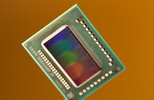Intel Core i7-3610QM vs Intel Core i7-4940MX
Intel Core i7-3610QM
► remove from comparison
Der Intel Core i7-3610QM ist ein schneller mobiler Quad-Core Prozessor basierend auf der Ivy Bridge Architektur. Dank Hyperthreading können die 4 Kerne gleichzeitig bis zu 8 Threads bearbeiten. Die Fertigung erfolgt im Gegensatz zum Vorgänger Sandy Bridge, der noch in 32 Nanometer produziert wurde, in einem kleineren 22 Nanometer Prozess mit 3D-Transistoren. Mit einer Taktrate von 2,3 GHz (maximaler Turbo: 3,1 GHz für 4 Kerne, 3,2 GHz für 2 Kerne, 3,3 GHz für 1 Kern) befindet sich der i7-3610QM deutlich unter dem i7-3720QM (2,6 GHz) und besitzt einen 6 MB großen L3-Cache. Vom i7-3615QM unterscheidet er sich durch einen geringeren GPU-Takt.
Ivy Bridge ist ein Die Shrink der Sandy Bridge Architektur, der nur an wenigen Stellen verbessert wurde. Unter anderem werden nun PCI Express in der neuen Version 3.0 sowie DDR3(L)-1600 unterstützt. Keine Änderungen gab es beim Featureset, welches weiterhin beispielsweise die Verschlüsselungstechnik AES-NI, die Befehlssatzerweiterung AVX sowie Turbo-Boost 2.0 umfasst. Die größten Änderungen gab es bei der integrierten Prozessorgrafikkarte und den Multimedia Features. Bis auf VT-d und vPro unterstützt der 3610QM alle Funktionen des Ivy Bridge Kerns wie VT-x, Trusted Execution und AES Funktionen.
Die Performance des i7-3610QM liegt durch kleinere Verbesserungen der Pro-MHz-Leistung etwa 5 % über einem taktgleichen Modell der Sandy Bridge Architektur. Verglichen mit dem i7-3720QM fällt der Prozessor etwa 10 % zurück und erreicht den i7-2920XM der Vorgängergeneration. Dies genügt, um selbst anspruchsvolle Anwendungen wie HD-Videoschnitt oder aktuelle 3D-Spiele mit Leichtigkeit zu meistern.
Für die Grafikausgabe zeigt sich die im Prozessor integrierte Intel HD Graphics 4000 mit 16 sogenannten Execution Units (EUs) verantwortlich. Mittels Turbo-Modus kann die Ausgangstaktrate von 650 MHz bis auf 1100 MHz ansteigen. Die Leistung liegt um etwa 40 % über der des Vorgängers (HD Graphics 3000), womit auch knapp die Grafiklösung von Llano (Radeon HD 6620G als schnellstes Modell) erreicht bzw. teils übertroffen wird.
Wie die meisten Quadcore-Modelle der Sandy Bridge Reihe besitzt auch der i7-3610QM eine TDP von 45 Watt, die auch die Grafikeinheit beinhaltet. Damit ist die CPU lediglich für große Notebooks ab 15 Zoll aufwärts geeignet.
Intel Core i7-4940MX
► remove from comparison
Der Intel Core i7-4940MX ist ein High-End Quad-Core Prozessor auf Basis der Haswell-Architektur, der im ersten Quartal 2014 vorgestellt wurde. Er löst den Core i7-4930MX als schnellsten Notebookprozessor ab und kann dank freiem Multiplikator einfach übertaktet werden. Dank Hyperthreading können die 4 Kerne gleichzeitig bis zu 8 Threads bearbeiten. Die in 22 Nanometern gefertigte CPU taktet mit 3,1 GHz, kann per Turbo Boost aber Frequenzen von bis zu 4,0 GHz erreichen (4 Kerne: 3,8 GHz, 2 Kerne: 3,9 GHz).
Architektur
Haswell ist der Nachfolger der 2012 vorgestellten Ivy-Bridge-Architektur und soll vor allem mit höherer Performance und verbesserter Energieeffizienz punkten. So wurde sowohl die Sprungvorhersage optimiert als auch die Zahl der Ausführungseinheiten erhöht, wodurch die Pro-MHz-Leistung um etwa 5 bis 10 Prozent gesteigert werden konnte. Neue Befehlssatzerweiterungen wie AVX2 und FMA sollen die Performance in darauf ausgelegten Anwendungen zusätzlich verbessern.
Performance
Durch die im Vergleich mit dem i7-4930MX nur um 100 MHz gestiegene Taktrate fällt auch das Leistungsplus sehr klein aus. Der 4940MX übertrifft die Performance seines Vorgängers um etwa 3 Prozent und kommt dem Desktop-Modell Core i7-4770K sehr nahe. Damit ist die CPU auch für extrem anspruchsvolle Anwendungen und Multitasking problemlos geeignet.
Grafikeinheit
Für die Grafikausgabe zeigt sich die im Prozessor integrierte Intel HD Graphics 4600 verantwortlich, die mit 400 - 1350 MHz taktet. Das Performanceplus gegenüber der HD Graphics 4000 liegt bei rund 30 Prozent, womit sich die HD 4600 knapp hinter der Radeon HD 8650G und auf dem Level einer dedizierter GeForce GT 720M einordnet.
Leistungsaufnahme
Der Core i7-4940MX wird von Intel mit einer TDP von 57 Watt spezifiziert. Damit ist die CPU lediglich für sehr große und schwere Notebooks ab 17 Zoll geeignet.
| Model | Intel Core i7-3610QM | Intel Core i7-4940MX | ||||||||||||||||||||||||||||||||||||||||||||||||||||||||||||||||||||||||||||||||||||||||||||||||||||||||||||||||||||||||||||||||||||||||||||||||||||||||||||||||||||||||||||||||||||||||||||||||||||||||||||||||||||||||
| Codename | Ivy Bridge | Haswell | ||||||||||||||||||||||||||||||||||||||||||||||||||||||||||||||||||||||||||||||||||||||||||||||||||||||||||||||||||||||||||||||||||||||||||||||||||||||||||||||||||||||||||||||||||||||||||||||||||||||||||||||||||||||||
| Series | Intel Core i7 | Intel Core i7 | ||||||||||||||||||||||||||||||||||||||||||||||||||||||||||||||||||||||||||||||||||||||||||||||||||||||||||||||||||||||||||||||||||||||||||||||||||||||||||||||||||||||||||||||||||||||||||||||||||||||||||||||||||||||||
| Serie: Core i7 Haswell |
|
| ||||||||||||||||||||||||||||||||||||||||||||||||||||||||||||||||||||||||||||||||||||||||||||||||||||||||||||||||||||||||||||||||||||||||||||||||||||||||||||||||||||||||||||||||||||||||||||||||||||||||||||||||||||||||
| Clock | 2300 - 3300 MHz | 3100 - 4000 MHz | ||||||||||||||||||||||||||||||||||||||||||||||||||||||||||||||||||||||||||||||||||||||||||||||||||||||||||||||||||||||||||||||||||||||||||||||||||||||||||||||||||||||||||||||||||||||||||||||||||||||||||||||||||||||||
| L1 Cache | 256 KB | 256 KB | ||||||||||||||||||||||||||||||||||||||||||||||||||||||||||||||||||||||||||||||||||||||||||||||||||||||||||||||||||||||||||||||||||||||||||||||||||||||||||||||||||||||||||||||||||||||||||||||||||||||||||||||||||||||||
| L2 Cache | 1 MB | 1 MB | ||||||||||||||||||||||||||||||||||||||||||||||||||||||||||||||||||||||||||||||||||||||||||||||||||||||||||||||||||||||||||||||||||||||||||||||||||||||||||||||||||||||||||||||||||||||||||||||||||||||||||||||||||||||||
| L3 Cache | 6 MB | 8 MB | ||||||||||||||||||||||||||||||||||||||||||||||||||||||||||||||||||||||||||||||||||||||||||||||||||||||||||||||||||||||||||||||||||||||||||||||||||||||||||||||||||||||||||||||||||||||||||||||||||||||||||||||||||||||||
| Cores / Threads | 4 / 8 | 4 / 8 | ||||||||||||||||||||||||||||||||||||||||||||||||||||||||||||||||||||||||||||||||||||||||||||||||||||||||||||||||||||||||||||||||||||||||||||||||||||||||||||||||||||||||||||||||||||||||||||||||||||||||||||||||||||||||
| TDP | 45 Watt | 57 Watt | ||||||||||||||||||||||||||||||||||||||||||||||||||||||||||||||||||||||||||||||||||||||||||||||||||||||||||||||||||||||||||||||||||||||||||||||||||||||||||||||||||||||||||||||||||||||||||||||||||||||||||||||||||||||||
| Transistors | 1400 Million | 1400 Million | ||||||||||||||||||||||||||||||||||||||||||||||||||||||||||||||||||||||||||||||||||||||||||||||||||||||||||||||||||||||||||||||||||||||||||||||||||||||||||||||||||||||||||||||||||||||||||||||||||||||||||||||||||||||||
| Technology | 22 nm | 22 nm | ||||||||||||||||||||||||||||||||||||||||||||||||||||||||||||||||||||||||||||||||||||||||||||||||||||||||||||||||||||||||||||||||||||||||||||||||||||||||||||||||||||||||||||||||||||||||||||||||||||||||||||||||||||||||
| Die Size | 160 mm2 | 177 mm2 | ||||||||||||||||||||||||||||||||||||||||||||||||||||||||||||||||||||||||||||||||||||||||||||||||||||||||||||||||||||||||||||||||||||||||||||||||||||||||||||||||||||||||||||||||||||||||||||||||||||||||||||||||||||||||
| max. Temp. | 105 °C | 100 °C | ||||||||||||||||||||||||||||||||||||||||||||||||||||||||||||||||||||||||||||||||||||||||||||||||||||||||||||||||||||||||||||||||||||||||||||||||||||||||||||||||||||||||||||||||||||||||||||||||||||||||||||||||||||||||
| Socket | FCPGA988 | rPGA | ||||||||||||||||||||||||||||||||||||||||||||||||||||||||||||||||||||||||||||||||||||||||||||||||||||||||||||||||||||||||||||||||||||||||||||||||||||||||||||||||||||||||||||||||||||||||||||||||||||||||||||||||||||||||
| Features | HD Graphics 4000 (650-1100MHz), DDR3(L)-1600 Memory Controller, HyperThreading, AVX, Quick Sync, Virtualization | HD Graphics 4600 (400 - 1350 MHz), DDR3(L)-1600 Memory Controller, HyperThreading, AVX, AVX2, Quick Sync, Virtualization, vPro, AES-NI | ||||||||||||||||||||||||||||||||||||||||||||||||||||||||||||||||||||||||||||||||||||||||||||||||||||||||||||||||||||||||||||||||||||||||||||||||||||||||||||||||||||||||||||||||||||||||||||||||||||||||||||||||||||||||
| iGPU | Intel HD Graphics 4000 (650 - 1100 MHz) | Intel HD Graphics 4600 (400 - 1350 MHz) | ||||||||||||||||||||||||||||||||||||||||||||||||||||||||||||||||||||||||||||||||||||||||||||||||||||||||||||||||||||||||||||||||||||||||||||||||||||||||||||||||||||||||||||||||||||||||||||||||||||||||||||||||||||||||
| Architecture | x86 | x86 | ||||||||||||||||||||||||||||||||||||||||||||||||||||||||||||||||||||||||||||||||||||||||||||||||||||||||||||||||||||||||||||||||||||||||||||||||||||||||||||||||||||||||||||||||||||||||||||||||||||||||||||||||||||||||
| $378 U.S. | $1096 U.S. | |||||||||||||||||||||||||||||||||||||||||||||||||||||||||||||||||||||||||||||||||||||||||||||||||||||||||||||||||||||||||||||||||||||||||||||||||||||||||||||||||||||||||||||||||||||||||||||||||||||||||||||||||||||||||
| Announced | ||||||||||||||||||||||||||||||||||||||||||||||||||||||||||||||||||||||||||||||||||||||||||||||||||||||||||||||||||||||||||||||||||||||||||||||||||||||||||||||||||||||||||||||||||||||||||||||||||||||||||||||||||||||||||
| Manufacturer | ark.intel.com | ark.intel.com |
Benchmarks
Average Benchmarks Intel Core i7-3610QM → 100% n=21
Average Benchmarks Intel Core i7-4940MX → 125% n=21
* Smaller numbers mean a higher performance
1 This benchmark is not used for the average calculation













